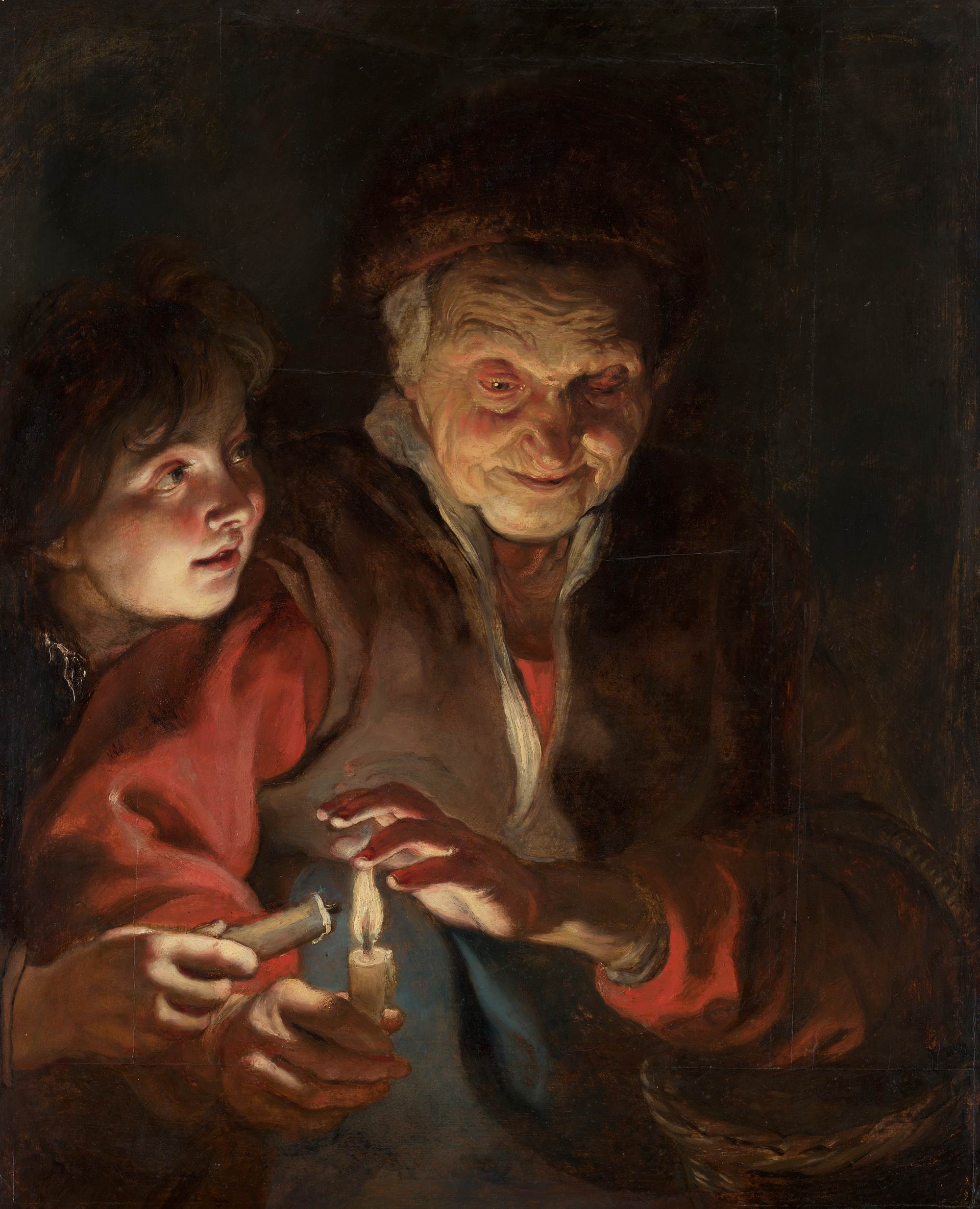While he was living in Italy, from 1600 to 1608, Peter Paul Rubens became acquainted with the paintings of Caravaggio. These are characterised by strong light-dark contrasts, figures squeezed narrowly into the pictorial plane, and a large measure of realism. This night piece, which Rubens painted in or around 1616-1617, is one of the earliest works produced in the style of Caravaggio in the Netherlands. It shows an old woman holding a lit candle-stump. A boy leans over her left shoulder, trying to light his candle from hers. The woman protects the flame with her left hand, which dims the bright light to a reddish glow that illuminates only the two figures’ faces and part of their clothing, leaving the rest of the scene in semi-darkness. Rubens has convincingly suggested the reflected candlelight on the old woman’s creased face.
Prints were made of the scene shortly after 1617. Rubens himself furnished one of the impressions with a Latin inscription: ‘Quis vetet apposito, lumen de lumine tolli, Mille licet capiant, deperit inde nihil’ (‘Light can be taken a thousand times from another light without diminishing it’). This quotation from Ars Amatoria (The art of love) by the Roman poet Ovid is taken from a passage encouraging readers to use youthful beauty in matters of love. Here, Ovid sketches the image of an old woman who is looking back at her lost opportunities in love at night-time. Johan van Heemskerck, who edited Ovid’s text in 1622, put it as follows: ‘You may become an old woman before you know it, lying on a lonely bed […], with past desires in your mind, sensuality stirring in your limbs, […] your skin furrowed with wrinkles’. These lines accord well with the image that Rubens presents to us here. The woman’s vacant gaze suggests that she is deep in thought. Passing the light to the boy may be her way of encouraging him to enjoy love, so that later, when he is old and perhaps lonely as she is, he will not have to look back on a life that remained unfulfilled in that respect.
When Rubens died, on 30 May 1640, an inventory was drawn up of his art collection. Number 125 of the 314 paintings on this list, ‘Vne pourtrait d’vne vieille auec vn garçon à la nuit’, is almost certainly the painting shown here. The work certainly exhibits one of the characteristics of the paintings that Rubens made for himself: it is composed of more planks than is customary – in this case, three vertical, one horizontal, and four narrow strips along the sides. It is generally assumed that the artist was reluctant to spend too much money on such paintings and therefore asked the panel-maker to use left-over pieces of timber.
(this is a reworked version of a text published in in: P. van der Ploeg, Q. Buvelot, Royal Picture Gallery Mauritshuis: A princely collection, The Hague 2005)







